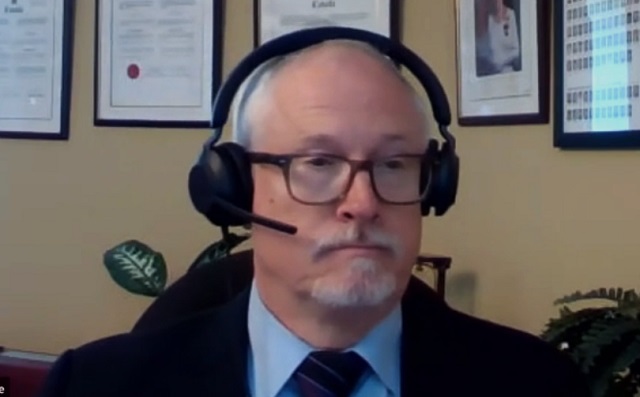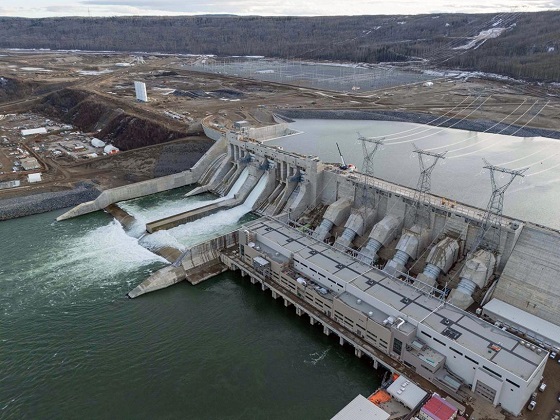Great Reset
Canadian MP warns new WHO pandemic treaty may enshrine COVID-era freedom restrictions

MP Colin Carrie
From LifeSiteNews
Colin Carrie recounted the freedom-throttling measures the Canadian government took during the COVID outbreak, warning that the WHO’s Pandemic Agreement may help make such measures permanent.
Canadian Member of Parliament (MP) Colin Carrie warned this week that proposed World Health Organization (WHO) agreements with a passing deadline of late May could “institutionalize” freedom-throttling COVID “pandemic mistakes.”
Carrie recounted the liberty-crushing COVID-era events that took place in Canada as well as around the world during the first-ever Sovereignty Summit held at the U.S. Capitol on Thursday, an event protesting the WHO’s pending threat to the sovereignty of its member nations, attended virtually by political leaders from around the world.
“Since COVID-19’s lockdowns and mandates, Canadians have seen our sovereignty, our charter rights and our civil liberties tested,” said Carrie, going on to point out that Canadian Prime Minister Justin Trudeau has admitted that he admires the “basic dictatorship” of China.
It was under such a leader as Trudeau that “freedom of speech, freedom of movement, freedom of consent and freedom of medical treatment were all enthusiastically challenged” by the government through “COVID dictates centrally controlled and communicated by the WHO,” Carrie noted.
Trudeau, moreover, “intentionally created an identifiable minority group — anti-vaxxers — and gleefully used all the power of the Canadian government to marginalize, dehumanize and keep over 6 million Canadians from fully participating in Canadian society,” Carrie declared.
He recalled how the Emergencies Act was “used to freeze bank accounts” while “businesses were shattered, seniors and loved ones died alone,” “children’s education was compromised and churches were closed,” affirming that Canadians do not want to relive this scenario during another real or supposed health emergency according to the dictates of the WHO.
Carrie went on to question why the WHO is saying the new Pandemic Agreement is “non-binding” when, according to the MP, the term “non-binding” was removed from the definitions of the treaty.
“Why would any country sign on to a new treaty when we haven’t conducted a serious evaluation of the last pandemic policy response? Will this treaty institutionalize WHO’s COVID pandemic mistakes?”
In a March 20 press release, the WHO called for an “urgent agreement from international negotiators on a Pandemic Accord … to bolster the world’s collective preparedness and response to future pandemics.”
“Only a strong global pact on pandemics can protect future generations from a repeat of the COVID-19 crisis,” a collective of heads of state wrote in a joint open letter to leaders of WHO member states.
A growing number of public figures as well as U.S. states and elected officials have raised the alarm about the so-called Pandemic Agreement in recent months.
In a letter dated May 22, almost half the U.S. governors, all of them Republicans, signed a letter to President Joe Biden declaring that they will resist any efforts of the WHO to control public policy in America through its proposed “Pandemic Agreement” and amended International Health Regulations (IHRs).
Earlier this month, Sen. Ron Johnson of Wisconsin also rallied every Republican in the U.S. Senate to sign an open letter imploring the Biden administration to reject the pending agreements being considered at the World Health Assembly (WHA) in late May.
Censorship Industrial Complex
How Wikipedia Got Captured: Leftist Editors & Foreign Influence On Internet’s Biggest Source of Info

Fr0m Stossel TV
I once reported how great Wikipedia is. But now, it’s manipulated by leftists. That’s a big problem because its bad information corrupts AI and search results. Even c0-founder Larry Sanger agrees.
But that’s just the beginning of the problem because “Wikipedia’s information spreads into everything online,” says @ashleyrindsbergmedia of @NPOVmedia .
That means when your ask ChatGPT, Google, or your phone a question, it’ll likely to take leftist spin straight from Wikipedia. Wikipedia bans most right-wing news sources and suggests Donald Trump is an authoritarian fascist (but they don’t even call Fidel Castro’s successor authoritarian).
They’ve turned my Wikipedia page into a smear against me.
I explain in this video.
_ _ _ _ _ _
To make sure you receive the weekly video from Stossel TV, sign up here:
https://www.johnstossel.com/#subscrib…
_ _ _ _ _ _
Digital ID
Canada releases new digital ID app for personal documents despite privacy concerns

From LifeSiteNews
The new GC Wallet is supposed to be a ‘foundational component’ of a controversial yet-to-come digital ID system.
Despite clear signs that most Canadians do not want a national digital ID, the Liberal government of Prime Minister Mark Carney has quietly released a new type of digital ID app on Google’s Play Store called GC Wallet.
The new app appeared on Google sometime late last week and was developed by Canada’s Employment and Social Development department. This is the same department, as reported by LifeSiteNews, that recently said it would move ahead with digital identification for anyone seeking federal benefits, including seniors on Old Age Security.
The new GC Wallet, say officials, is a “secure and convenient way to store and access your official digital credentials,” allowing users to keep important documents on it, such as temporary visas along with pilot licenses, and has an offline QR code function built in.
According to the government, the new GC Wallet is supposed to be a “foundational component” of a yet-to-come digital ID system that most likely will be expanded to a variety of documents.
The app was blasted on X by Kyle Kemper, the half-brother of former Prime Minister Justin Trudeau.
In an X post late last week, Kemper claimed the new app can “use your device’s camera to scan QR codes and import credentials issued by authorized institutions. Present your digital documents using dynamic QR codes or secure on-screen displays, making it easy to verify your identity and other information at airport boarding gates and other checkpoints.”
“The government of Canada has silently deployed a digital wallet on the Google Play Store for Digital ID. They have also cancelled an industry RFP process. I am digging into this and will offer detailed comments soon,” he wrote.
The GC Wallet is under development and, according to the feds, is “part of a limited Government of Canada pilot and is intended solely for use by approved participants.
The app is not available for broad public use at this time.
During COVID, the Canadian federal government released a digital-type app called ArriveCAN app for travel that was a form of digital ID. The app was riddled with technical glitches along with privacy concerns from users.
Last week, as reported by LifeSiteNews, without oversight from elected federal MPs, Canada’s Department of Immigration had research done to investigate a national ID system using digital passports for domestic use and how such a system would be enforced.
As reported by LifeSiteNews, the Canadian government hired outside consultants tasked with looking into whether or not officials should proceed with creating a digital ID system for all citizens and residents.
As per a May 20 Digital Credentials Issue memo, as noted by Blacklock’s Reporter, the “adoption” of such a digital ID system may be difficult.”
Digital IDs and similar systems have long been pushed by globalist groups like the World Economic Forum, an organization with which Carney has extensive ties, under the guise of ease of access and security.
One of Canada’s most staunchly pro-life MPs, Leslyn Lewis, recently warned Canadians to be “on guard” against a push by the ruling Liberal Party to bring forth Digital IDs, saying they should be voluntary.
-

 Digital ID2 days ago
Digital ID2 days agoCanada releases new digital ID app for personal documents despite privacy concerns
-

 Bruce Dowbiggin2 days ago
Bruce Dowbiggin2 days agoNFL Ice Bowls Turn Down The Thermostat on Climate Change Hysteria
-

 Community1 day ago
Community1 day agoCharitable giving on the decline in Canada
-

 Energy2 days ago
Energy2 days agoCanada’s sudden rediscovery of energy ambition has been greeted with a familiar charge: hypocrisy
-

 Crime2 days ago
Crime2 days agoTrump designates fentanyl a ‘weapon of mass destruction’
-

 Energy2 days ago
Energy2 days agoCan we not be hysterical about AI and energy usage?
-

 Energy2 days ago
Energy2 days agoEnergy security matters more than political rhetoric
-

 Alberta1 day ago
Alberta1 day agoCanada’s New Green Deal






